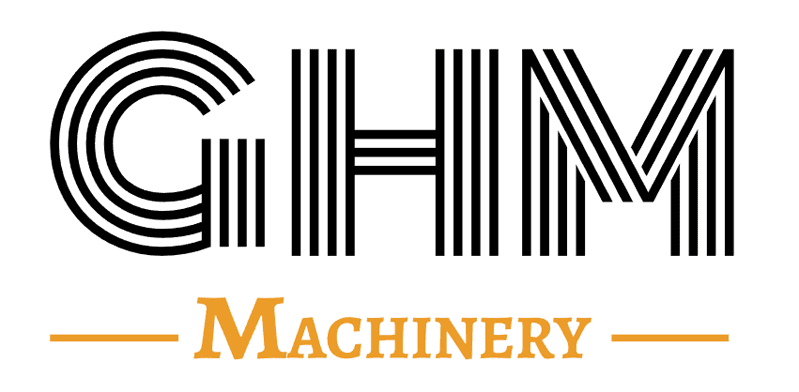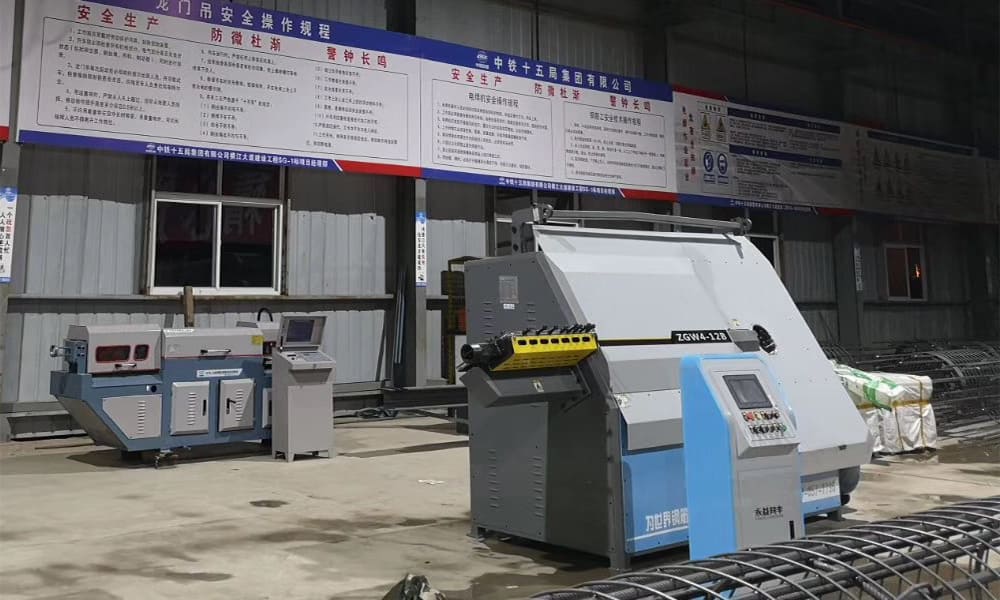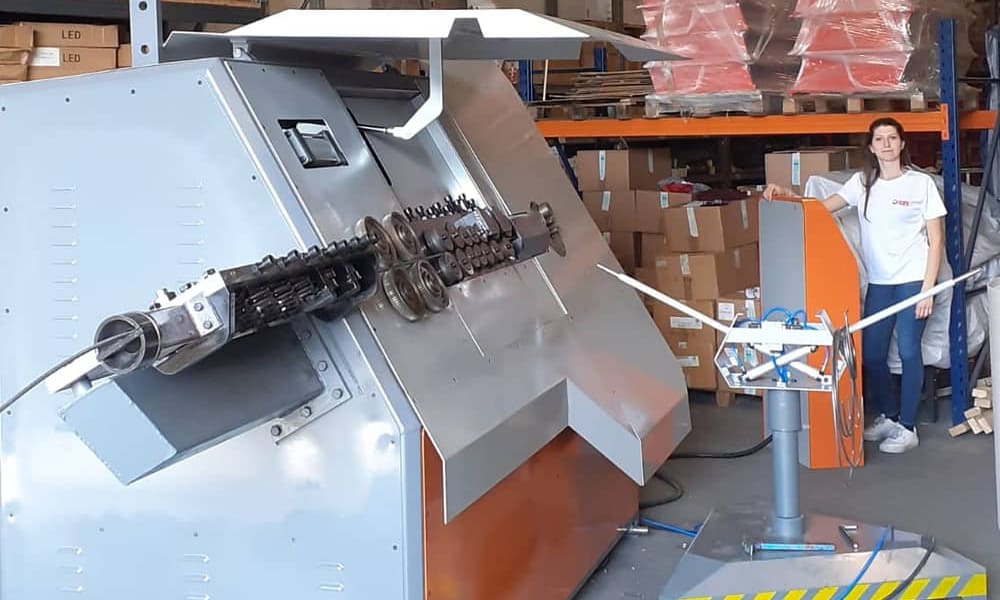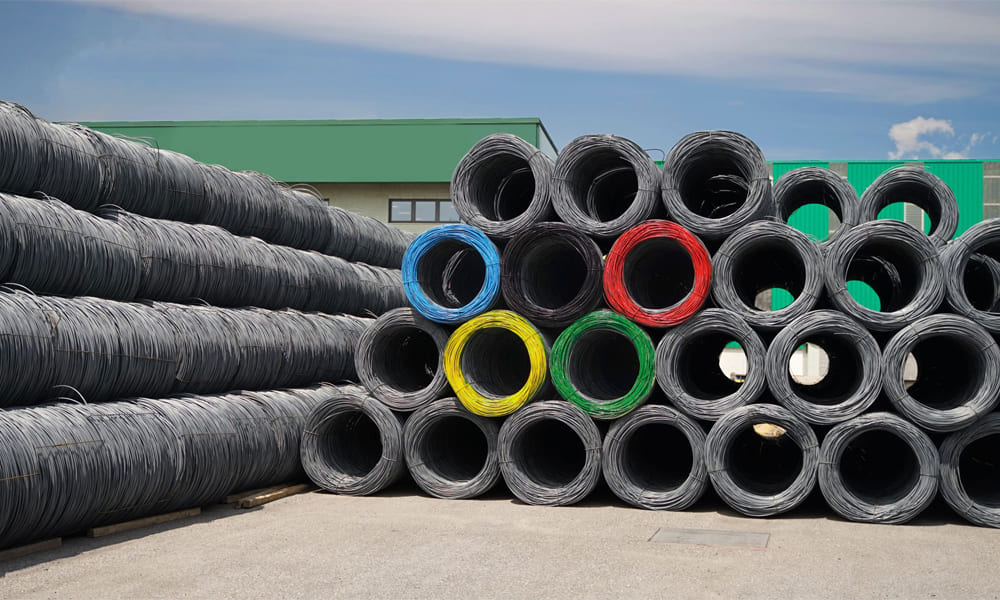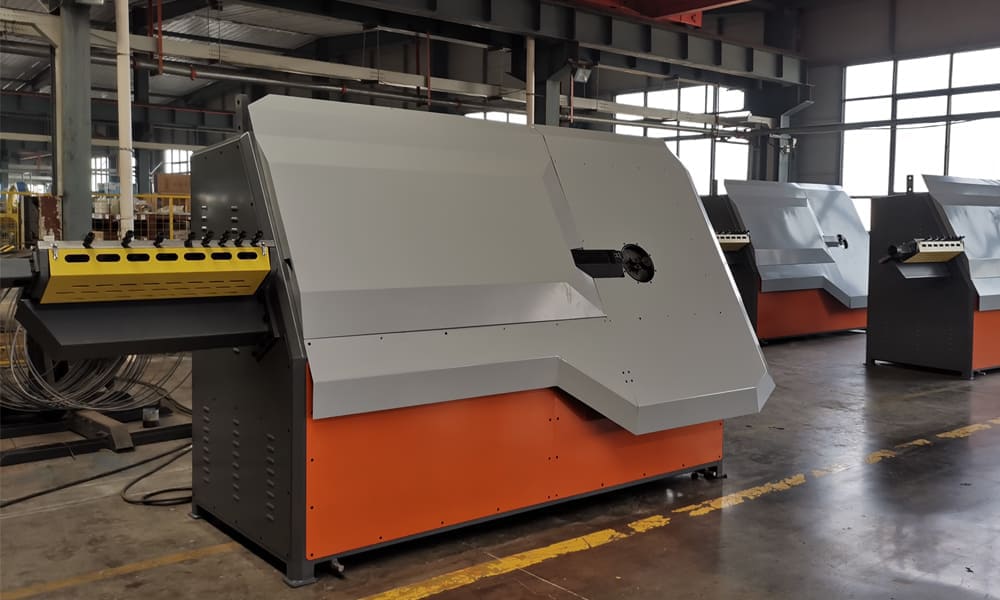When purchasing a fully automatic rebar bending machine, it’s important to consider several key factors to ensure optimal performance:
1. Performance Indicators
Evaluate the machine’s performance based on its processing capacity for both single-line and double-line rebar, maximum bending angle, stirrup size range, traction speed, and power consumption.
- Single-line rebar capacity: Typically ranges from 4-13mm, meaning the machine can handle rebar with diameters between 4mm and 13mm.
- Double-line rebar capacity: Usually between 4-12mm, suitable for double-line rebar processing.
- Maximum bending angle: Up to ±180°, providing excellent flexibility in rebar bending.
- Stirrup side size range: Maximum of 1200mm and a minimum of 50mm, offering versatility in stirrup production.
- Traction speed: Can reach up to 100m/min, ensuring high-efficiency operation.
- Power consumption: An average of 5KW/H, highlighting its energy-saving potential.
2. Machine Composition
Understanding the machine’s key components helps ensure smooth operation:
- Straightening Unit: Consists of 28 rollers (14 upper, 14 lower) for precise rebar straightening, driven by a motor through a V-belt system.
- Shearing Unit: Powered by a 4KW motor, the cutting mechanism works in sync with the bending process to improve efficiency.
- Electrical Control Unit: Includes servo motors for straightening and bending, as well as solenoid valves, control panels, and a length-control switch for seamless operation.
3. Price Range
CNC rebar bending machines vary in price depending on brand, functionality, and performance. Prices typically range from $12,000 to $35,000. Select a model that aligns with your budget and operational needs.
4. Motor Power
The machine’s motor is crucial for its performance:
- Power supply: Three-phase AC, 50HZ, 380V.
- Servo motor power: 17.5KW for straightening, 7.5KW for bending, and 3KW for shearing. For enhanced performance, consider a motor with a higher capacity, such as 21KW.
5. Automatic Threading Device
Look for a model with an automatic threading device, which enhances processing efficiency. This allows the machine to automatically feed the steel bar into the system with minimal manual intervention.
6. Bending and Clamping Device
Ensure that the machine includes a reliable bending and clamping device to prevent rebar from slipping during the bending process, which is essential for maintaining accuracy.
7. Transmission Mode
Choose a reliable transmission system, such as:
- Synchronous belt drive: Known for being easy to replace and operating quietly.
- Gearbox drive: Offers greater power and durability.
Conclusion
When selecting a fully automatic rebar hoop bending machine, it’s essential to consider the machine’s performance, brand reputation, service availability, price, and technical specifications. This ensures that the machine meets your operational needs while offering reliable performance and robust after-sales support.
